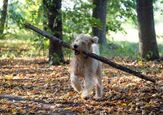What’s the Easiest Lizard to Take Care Of?

Reptiles are becoming increasingly popular as pets, and lizards are often a top choice for beginners. While they might seem exotic or high-maintenance at first glance, several lizard species are actually quite low-effort and beginner-friendly. The key is choosing a species that’s hardy, adaptable, and not too demanding when it comes to feeding, habitat setup, or handling. So, what’s the easiest lizard to care for? Let’s take a closer look.
Leopard Gecko: The Top Beginner Pick
When it comes to easy care, the Leopard Gecko is widely regarded as the best starter lizard - and for good reason. These small, docile reptiles grow to about 7 to 10 inches (17 to 25 cm) in length, which means they don’t require a large enclosure. A standard 20-gallon tank is usually more than enough for one adult gecko.
They’re also known for their calm temperament and tend to tolerate gentle handling well, making them a great choice for anyone looking for an interactive reptile pet.
Simple Habitat and Lighting Needs
Leopard Geckos are nocturnal, so unlike many reptiles, they don’t require UVB lighting, which makes setup more affordable and less complicated. All they need is a warm side of the tank maintained at around 88–90°F (31–32°C), a cooler side around 75°F (24°C), and humidity levels between 40–60%. These conditions are fairly easy to achieve in most indoor environments using a heat mat or lamp.
Straightforward Diet
Feeding a Leopard Gecko is also simple. They thrive on live insects such as crickets, mealworms, or dubia roaches. These should be dusted with calcium powder to support healthy bones and prevent deficiencies. Best of all, adult Leopard Geckos typically only need to eat every two to three days - and since they don’t eat fruits or vegetables, cleanup is minimal.
Other Beginner-Friendly Lizards
While the Leopard Gecko is the easiest choice, there are other beginner-friendly lizards worth considering:
Crested Gecko
Originally from New Caledonia, Crested Geckos are another great option. They don’t need high heat and can thrive at room temperature. Their diet consists of easy-to-prepare fruit-based commercial food, and they’re generally easy to care for. While they can be a bit jumpy, they tolerate gentle handling well.
Bearded Dragon
These lizards are slightly more advanced but still beginner-friendly. Bearded Dragons grow larger than Leopard Geckos and need UVB lighting and a spacious tank. However, they’re extremely social and have a calm, curious nature that makes them a joy to own.
Blue-Tongue Skink
Larger and a bit more involved in terms of care, Blue-Tongue Skinks are known for being docile and easygoing. They eat a mix of fruits, vegetables, and insects, and their larger size makes them more interactive - but also requires more space and attention to their lighting and temperature needs.
What to Know Before Bringing a Lizard Home
No matter which species you choose, it’s essential to do your research ahead of time. Understand your lizard’s specific habitat needs, diet, temperament, and expected lifespan. Many pet lizards live well over a decade - Leopard Geckos, for example, can live 10 to 20 years in captivity - so you should be prepared for a long-term commitment.
Also, be sure to buy your pet from a reputable breeder or pet store. Avoid wild-caught reptiles, which can carry diseases and are often difficult to acclimate to life in captivity.
Final Thoughts
If you’re new to reptile keeping, you don’t have to feel overwhelmed. With the right setup and a little basic knowledge, species like the Leopard Gecko make reptile ownership simple and rewarding. Whether you’re drawn to the ease of care, fascinating behavior, or simply want a pet that’s a little different, a beginner-friendly lizard might be just the companion you’re looking for.

A proud mama to seven dogs and ten cats, Angela spends her days writing for her fellow pet parents and pampering her furballs, all of whom are rescues. When she's not gushing over her adorable cats or playing with her dogs, she can be found curled up with a good fantasy book.
More by Angela Vuckovic
























